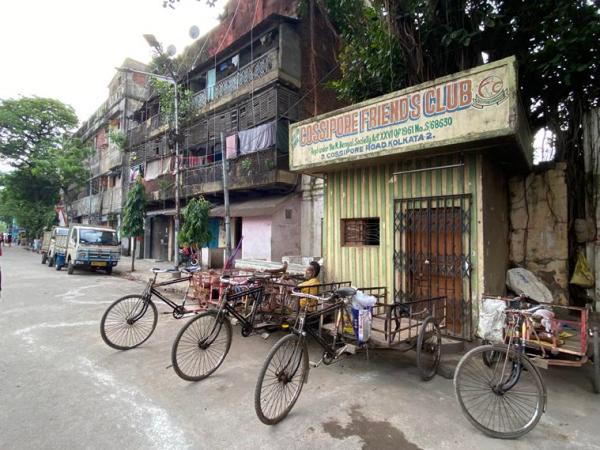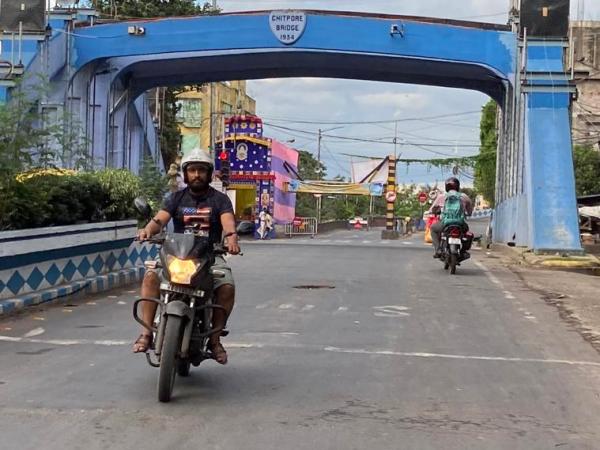As the city of Kolkata grew over the years, it slowly incorporated villages and towns that lay on the outskirts of what had been originally demarcated as the city’s limits in the early years after it began taking the shape of an urban settlement. Among these was Cossipore or Kashipur, before the name was anglicised.
The neighbourhood lies just beyond north Kolkata and the Circular Canal forms its southern boundaries. Cossipore became a part of the developing metropolis of Calcutta in 1717 when the British East India Company rented 38 villages near the city from Mughal Emperor Farrukhsiyar. In 1758, the Company purchased 17 villages, in addition to the 38 it had previously rented, from Nawab Mir Jafar, the first dependent Nawab of Bengal.
These villages were all incorporated into what formed the outer fringes of the developing city and were called ‘Dihi Panchannagram’ in Bengali which means ‘55 villages’. These villages lay outside the Maratha Ditch, and this ditch, approximately 5 kilometres long, was excavated in 1742 in a perimeter around the city of Calcutta, to protect the British from the Maratha invasion that never came, and was entirely funded by taxes paid by Indians.
The neighbourhood lies just beyond north Kolkata and the Circular Canal forms its southern boundaries. (Express Photo by Neha Banka)
Historian P Thankappan Nair writes in his book ‘A History of Calcutta’s Streets’ that Cossipore was a part of Sinthee village, one of 55 villages that eventually formed suburban Calcutta.
Subscriber Only Stories
“The Cossipore Reach is one of the finest on the river, and is lined by a number of handsome villa residences,” writes English author H E A Cotton in his book ‘Calcutta Old and New’. Cotton’s writings on Calcutta serve as one of the most exhaustive accounts of pre-Independence Calcutta and the wider Bengal region.
 The handsome villa residences that Cotton once wrote of in his books are nowhere to be found now. (Express Photo by Neha Banka)
The handsome villa residences that Cotton once wrote of in his books are nowhere to be found now. (Express Photo by Neha Banka)
Writing about the incorporation of Cossipore into Calcutta, Cotton says, “At the extreme north is the village of Cossipore (Kasipur) where are the Government Gun Foundry, the Snider and Rifle Shell Factories — originally constructed by Colonel Hutchinson, of the Engineers, after he had ransacked England and Europe for the best models. Now-a-days, few guns are cast there; but a vast amount of useful and necessary work is carried on. Very many improvements have been introduced, and the factory has become a great local assistance to Government, rendering it, in many respects, quite independent of Home idents…Here are also extensive Sugar Mills, and Jute Screw Houses.”
There are a few theories about how Cossipore got its name. In the December 1889 edition of the National Magazine, Bengali scholar Sarat Chandra Mitra wrote “Cossipore is said to be named after Kassiram Mitra who belonged to the same family as Gobindaram Mitra ‘who was a zemindar and held large farms from the Nawab of Murshidabad’ and who was the ‘black banian’ of the Mayor’s Court for twenty-five years and had amassed an immense fortune”, quotes Nair in his book. But Nair believes that Mitra appeared to have gotten the origins of Cossipore’s name wrong. Instead, Nair says the neighbourhood’s name appears to be a corruption of the Bengali term ‘khasae’ or ‘fine muslin’ and ‘pur’ or ‘village’.
Advertisement
 H E A Cotton’s writings on Calcutta serve as one of the most exhaustive accounts of pre-Independence Calcutta and the wider Bengal region. (Express Photo by Neha Banka)
H E A Cotton’s writings on Calcutta serve as one of the most exhaustive accounts of pre-Independence Calcutta and the wider Bengal region. (Express Photo by Neha Banka)
It is likely that the neighbourhood got its name from fine muslin because the neighbourhood of Chitpore, just next door to Cossipore, specialised in cotton fabrics, particularly in the 17th century and the production of cotton fabric was an important local industry in Sutanuti, one the three villages that Job Charnock combined to form Calcutta in 1690.
Nair believes that the thriving industry of cotton production in this area was an important factor in the establishment of the East India Company’s headquarters in Bengal, and appears to be a more credible explanation for the neighbourhood’s name.
 The Chitpore Bridge, erected in 1934, connects Cossipore with the larger north Kolkata area (Express Photo by Neha Banka)
The Chitpore Bridge, erected in 1934, connects Cossipore with the larger north Kolkata area (Express Photo by Neha Banka)
Today, the Chitpore Bridge, erected in 1934, connects Cossipore with the larger north Kolkata area. But a little to the west of this structure was the original bridge that served as a connector. In his book, ‘The Good Old Days of Honorable John Company’ (1882), author W H Carey writes that beneath the old Chitpore Bridge was a 60 feet long and 24 feet wide lock that allowed boats to pass between the Hooghly River and the Circular Canal.
Advertisement
Like many of Kolkata’s old neighbourhoods, Cossipore too has changed. The handsome villa residences that Cotton once wrote of in his books are nowhere to be found now.
Source: https://news.google.com/__i/rss/rd/articles/CBMiamh0dHBzOi8vaW5kaWFuZXhwcmVzcy5jb20vYXJ0aWNsZS9jaXRpZXMva29sa2F0YS9zdHJlZXR3aXNlLWtvbGthdGEtY29zc2lwb3JlLWJlY2FtZS1wYXJ0LW9mLWNpdHktODMwMTc3Ny_SAQA?oc=5

